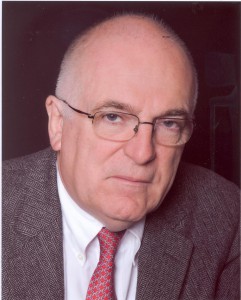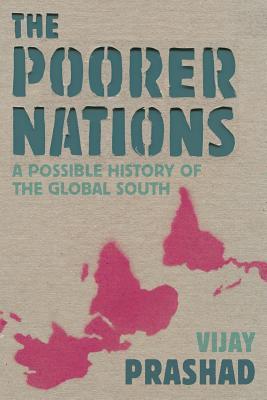Exclusive: Leaked Pakistani report confirms high civilian death toll in CIA drone strikes
by Chris Woods

Pakistan officially denied that 81 civilians including children died in this 2006 CIA drone strike – but a leaked document says otherwise. (Photo: Getty Images).
A secret document obtained by the Bureau reveals for the first time the Pakistan government’s internal assessment of dozens of drone strikes, and shows scores of civilian casualties.
The United States has consistently claimed only a tiny number of non-combatants have been killed in drone attacks in Pakistan – despite research by the Bureau and others suggesting that over 400 civilians may have died in the nine-year campaign.
The internal document shows Pakistani officials too found that CIA drone strikes were killing a significant number of civilians – and have been aware of those deaths for many years.
Of 746 people listed as killed in the drone strikes outlined in the document, at least 147 of the dead are clearly stated to be civilian victims, 94 of those are said to be children.
The confidential 12-page summary paper, titled Details of Attacks by Nato Forces/Predators in FATA was prepared by government officials in Pakistan’s Federally Administered Tribal Areas (FATA).
Based on confidential reports from a network of government agents in the field, it outlines 75 separate CIA drone strikes between 2006 and late 2009 and provides details of casualties in many of the attacks. Five attacks alleged to be carried out by Nato or other unspecified forces are also listed.
The document shows that during the 2006-09 period covered, when Pakistan’s government and military were privately supporting the CIA’s campaign, officials had extensive internal knowledge of high civilian casualties.
A spokesman for the Ministry of Foreign Affairs told the Bureau the present Pakistani government opposes drone strikes: 'Pakistan’s position on drone strikes has been stipulated on several occasions. The drone strikes violate our sovereignty and international law. These also entail human rights and humanitarian implications.’
A former Political Agent for North Waziristan who was shown the leaked report by the Bureau says he does not believe the casualty figures to be exaggerated.
'There was no benefit in officials "cooking the books" here, since this document was clearly never intended to be seen outside the civilian administration,’ said Rauf Khan Khattak, who also recently served in Pakistan’s caretaker government.
Three separate sourcesThe leaked document – which the Bureau obtained from three separate sources – is based on field reports by government officials rather than on media coverage. The Bureau understands that the document is continually updated as attacks occur – although the copy obtained ends with a strike on October 24 2009.
Prepared for the FATA Secretariat – the political administration of the tribal areas – the document was never intended for public release. Since no individual victims are named, the Bureau has assessed that it is safe to publish the paper in its entirety.
The newly released paper gives a precise location and casualty count for that strike, noting:
Predator attack was made on the house of Bakhtawar Khan Daur, Mohammad Khel, Tehsil Datta Khel Miranshah. One injured.
According to former officials familiar with the process, the internal casualty data listed in the document would have been collated through an extended network of government contacts.
Each tribal area such as North Waziristan is administered by a Political Agent and his assistants. Beneath them are agents known as tehsildars and naibs who gather information when drone strikes occur – the names and identities of those killed, damage to property and so on. Additional information is also drawn from the khassadar – the local tribal police – and from paid informants in villages.
'What you end up with in these reports is reasonably accurate, because it comes from on-the-ground sources cultivated over many years. And the political agent is only interested in properly understanding what actually happened,’ says former official Rauf Khan Khattak.
Key document
Both the US and Pakistani authorities have historically been wary of releasing casualty data for the 'secret’ CIA campaign.
However in March, UN special rapporteur Ben Emmerson QC – who is carrying out an investigation into drone strikes – said that Pakistani officials had now produced estimates of civilians killed in CIA drone attacks.
Emmerson stated that Islamabad 'has been able to confirm that at least 400 civilians had been killed as a result of drone strikes, and that a further 200 individuals were regarded as probable non-combatants. Officials indicated that due to under-reporting and obstacles to effective investigation on the ground these figures were likely to be under-estimates of the number of civilian deaths.’
In contrast, leaked US intelligence documents recently obtained by news agency McClatchy show the CIA rarely admits to civilian deaths in Pakistan.
Yet the internal document obtained by the Bureau shows that for years Pakistani officials were noting privately what news media and researchers were already reporting publicly – that significant numbers of civilians were indeed being killed in CIA attacks.
In a US strike on the village of Damadola in January 2006, for example, officials noted: ’05 children 05 women and 6 mens [sic] all civilians’ died. Press reports at the time indicated that between 10 and 18 civilians had died.
The leaked report details 16 civilian deaths in this January 2006 drone strike. (Photo: AFP/Getty)
On four other occasions, tribal officials privately reported civilian deaths where the media had reported none.
On June 14 2009, for example, FATA officials secretly noted that an attack on a vehicle which killed three people was on 'a civilian pickup truck’. No Urdu or English-language media at the time reported any civilian deaths.
Most controversially, tribal officials reported back to Islamabad in October 2006 that 81 civilians, all but one of whom were described as children, were killed in a single drone strike on a religious school in Bajaur Agency.
According to officials, the casualties were ’80 children 01 men all civilian’. It was widely reported at the time that scores of children had died: Pakistani newspaper The News published the names and ages of 69 children, under the UN definition of a child as being under 18 years old. The discrepancy appears to be because the FATA Secretariat has also classified older students killed as children.
As with all early CIA drone strikes, Pakistan’s military had initially claimed it was responsible for the 2006 Bajaur strike. As word of civilian deaths began to emerge, the army reversed its position and denied carrying out the attack, although it has consistently claimed that only militants died that day.
In June 2012, Pakistan’s former President General Pervez Musharraf told journalist Jemima Khan: 'In the media, they said it was all children. They were absolutely wrong. There may have been some collateral damage of some children but they were not children at all, they were all militants doing training inside.’
Jemima Khan is associate editor of British magazine the New Statesman and also the former wife of Pakistani politician Imran Khan – who campaigns vociferously against US drone strikes.
'Can you imagine the uproar that would be caused anywhere else in the world if 94 children were reported murdered in just three years?’ Ms Khan told the Bureau.
Ms Khan said that she was angered to learn that senior military and government officials were denying the deaths of children at Bajaur, even as they privately knew otherwise.
'This leaked document proves what many have suspected all along – that US and Pakistani politicians have been lying to us,’ she said.
Former officials agree that the leaked document is most likely accurate: 'You can’t distort that kind of information. If children hadn’t been killed, we’d have had people coming to us from all over Bajaur who would have told us so,’ former FATA agent Rauf Khan Khattak insists.
Unnamed deadThe secret government papers are revealing, but they also have some puzzling omissions.
None of those killed are named in the document – either civilians or alleged or known militants. Even where prominent militant commanders were killed – such as Baitullah Mehsud, head of the Pakistan Taliban (TTP), who died in August 2009 – no reference is made to the target.
Reports of civilian deaths also disappear entirely for most of 2009, after President Obama took office.
In part this is because officials occasionally note that 'details of casualties are yet to be ascertained.’ But many credible reports of civilian deaths are simply missing.
The Bureau’s own research shows that civilian deaths have been credibly reported in at least 17of the 53 CIA drone strikes in Obama’s first year in office.
Yet FATA officials report civilian deaths in only three incidents in 2009.
On January 23 that year, for example, the secret file notes only that five people died in a strike in South Waziristan – with no indication of civilian deaths.
However, a letter from the South Waziristan Political Agency – obtained in 2010 by the Center for Civilians in Conflict (right) – clearly notes four civilian deaths in that attack. President Obama is also reported to have been informed of civilian deaths in this and another strike on the same day.
For the years 2006 to 2008, the internal document far more closely matches media reports of civilian deaths. Yet measured against the public record, it is unclear why references to civilian deaths in the report disappear almost entirely after Obama’s election.
'No such documents’Ambassador Rustan Shah Mohmand, who was a senior administrator in the tribal areas for 25 years between 1973 and 1998, cautions that the released file might not be the fullest data available.
Noting that Pakistan’s military is responsible for security in FATA, he told the Bureau: 'Tribal documents might present a broad picture. But any accuracy is dependent on what data the military chooses to release to or withhold from the political agents. In the last eight years, for example, no precise casualty figures have ever been submitted to Pakistan’s parliament.’
Rumours have been circulating for many months of internal Pakistani documents detailing drone strike casualties. The Chief Justice of the Peshawar High Court, Dost Muhammad Khan, began demanding in mid 2012 that the FATA Secretariat release all casualty data it held.
In his final judgment Chief Justice Khan, citing 'Political Authorities’ in FATA, said that 896 civilians had been killed by the CIA between 2007 and 2012 in North Waziristan, with a further 533 civilian deaths in South Waziristan.
Those figures indicate that FATA officials may now be claiming a far higher civilian death toll than that reported by the leaked document - although the source for those claims is not clear.
'How come the same civil servants are feeding one kind of data to the Peshawar High Court and another kind of data to the FATA secretariat?’ asked Shahzad Akbar, a legal fellow at charity Reprieve and the Pakistani barrister behind the successful Peshawar case. 'Are they fudging the numbers based on who was on the receiving end?’
US counter-terrorism officials declined to comment on the specifics of the leaked document, though referred the Bureau to recent comments by both President Obama and CIA Director Brennan stating that the US goes to great lengths to limit civilian deaths in covert drone strikes.
Source











